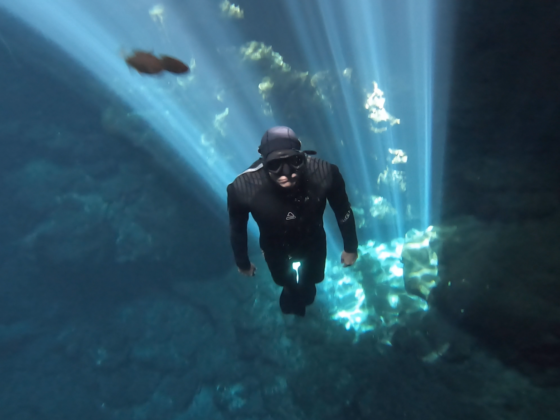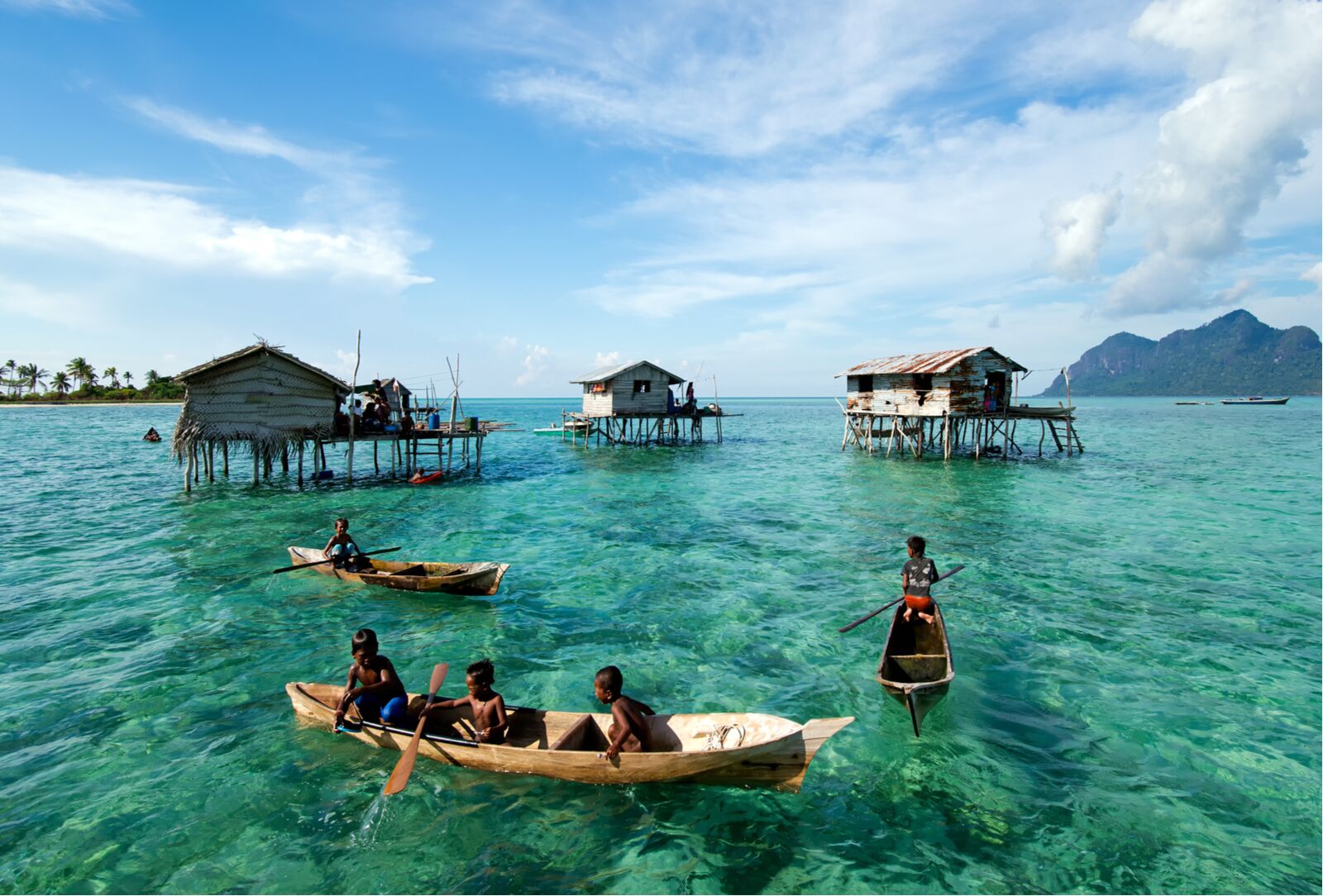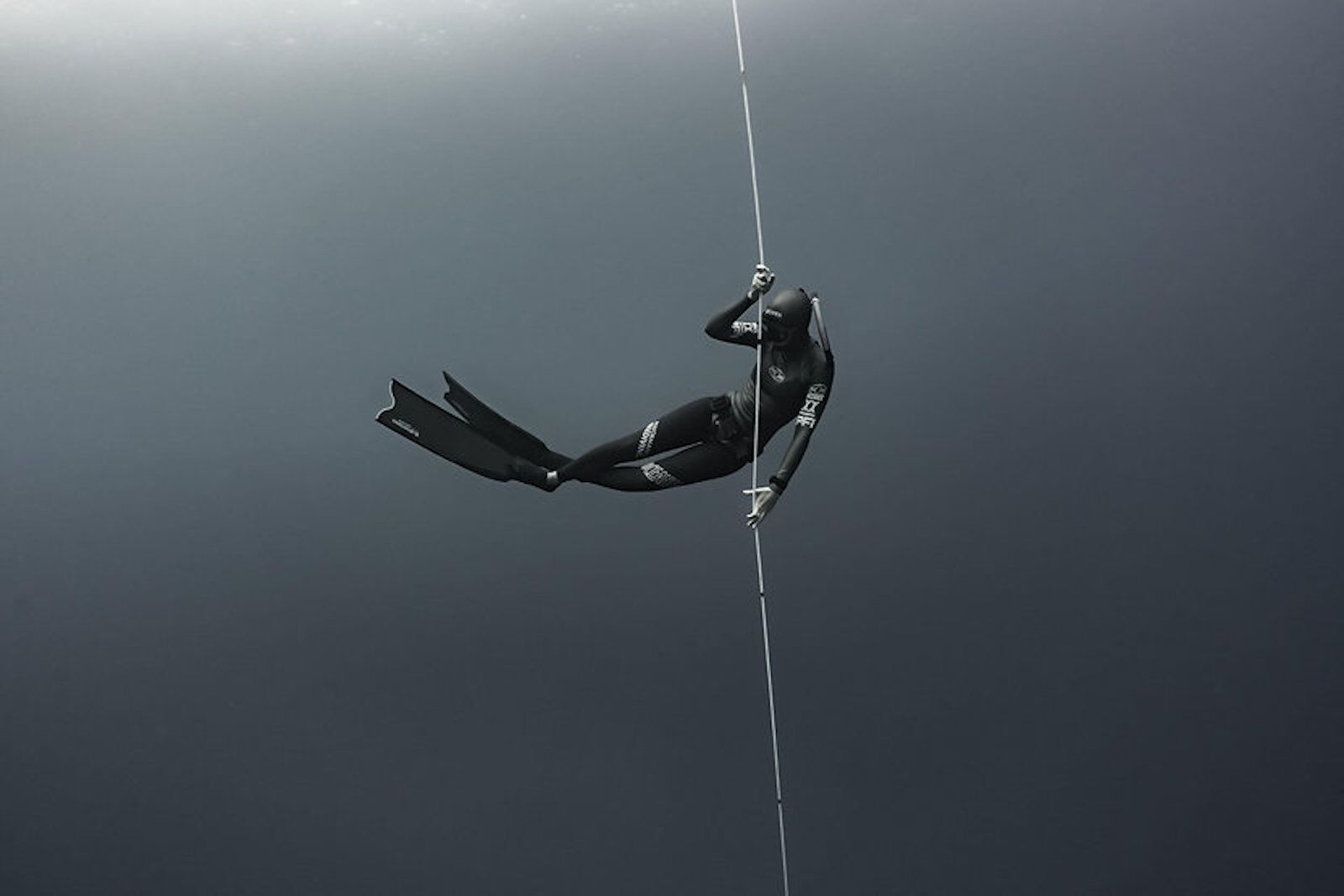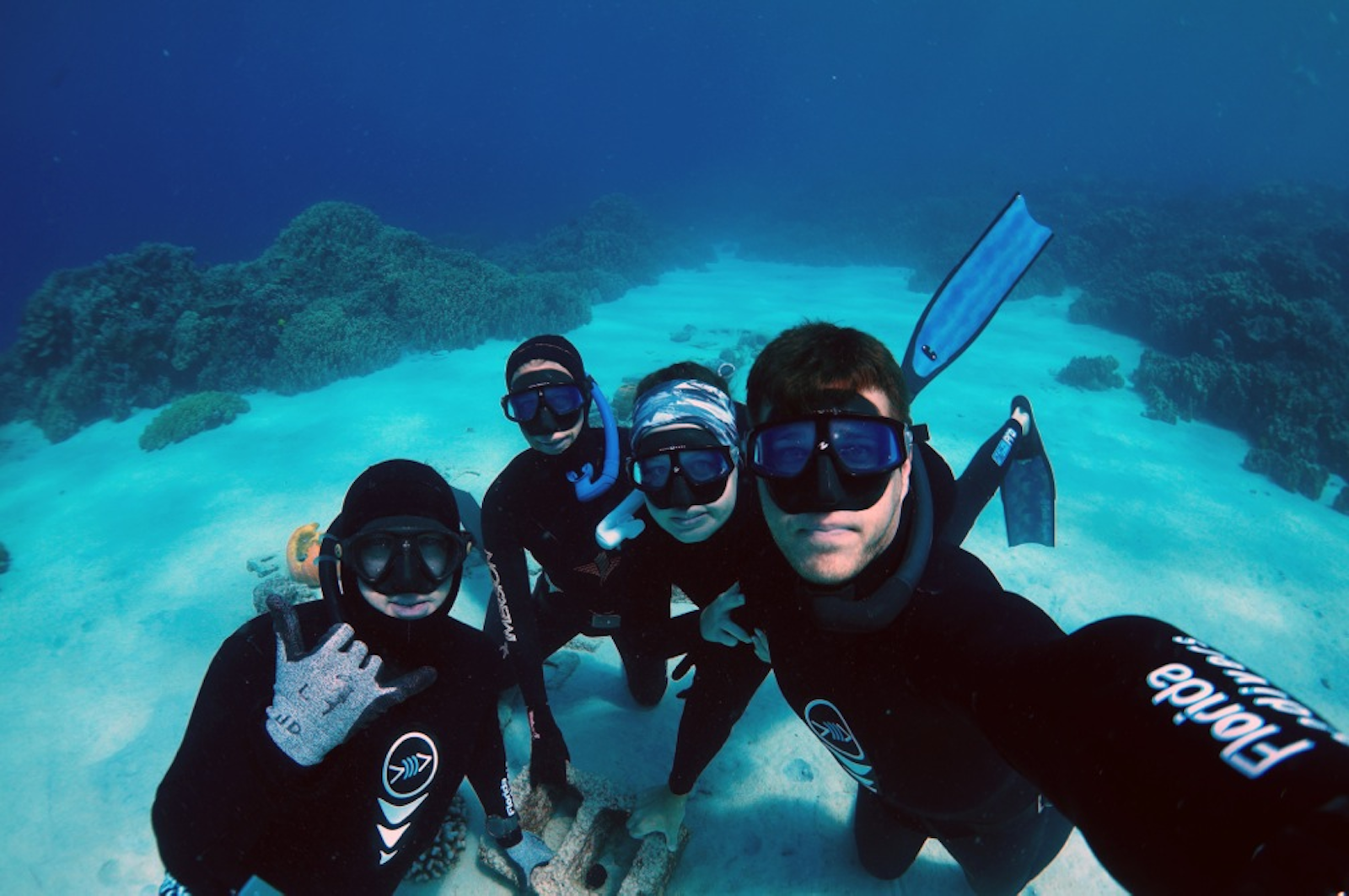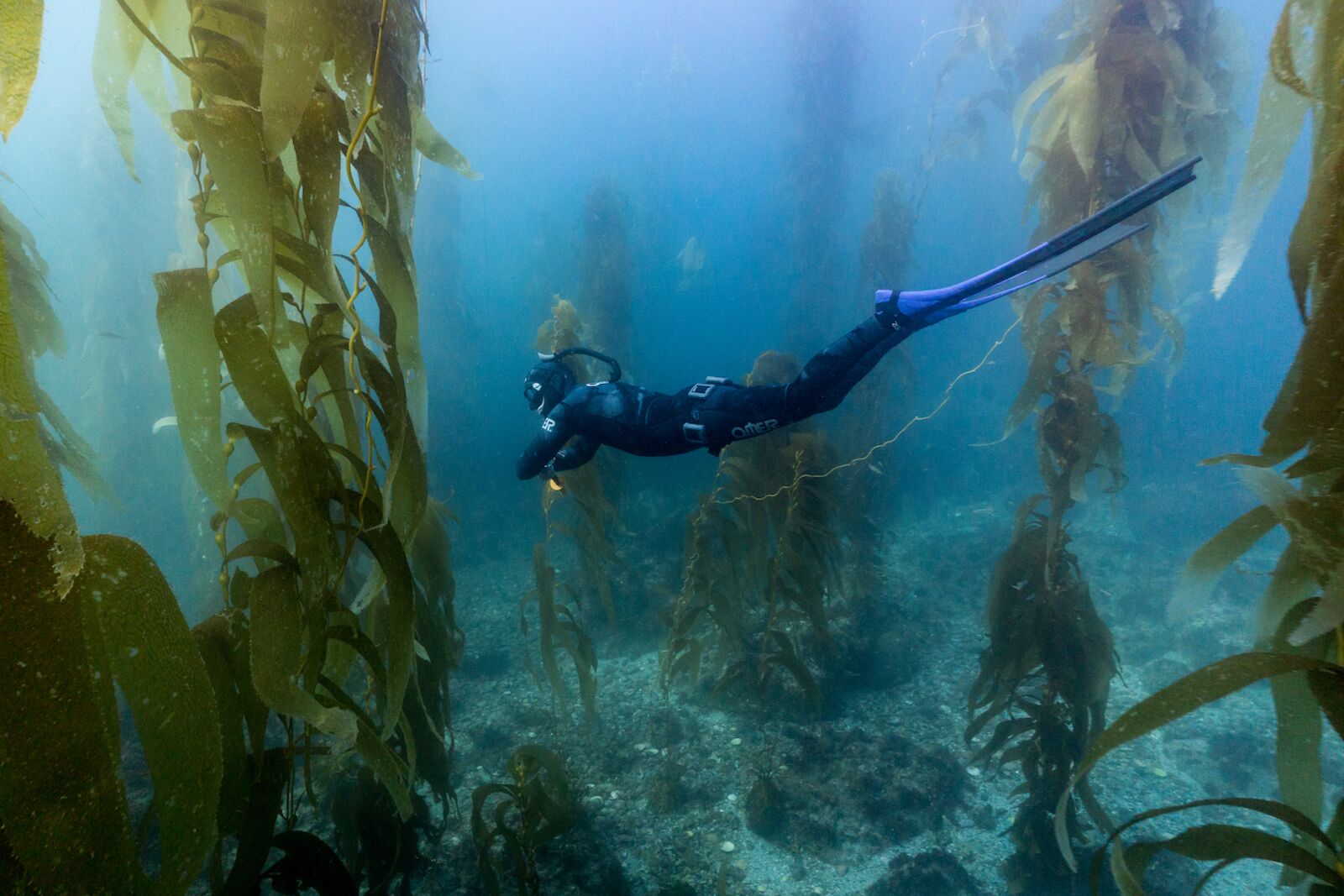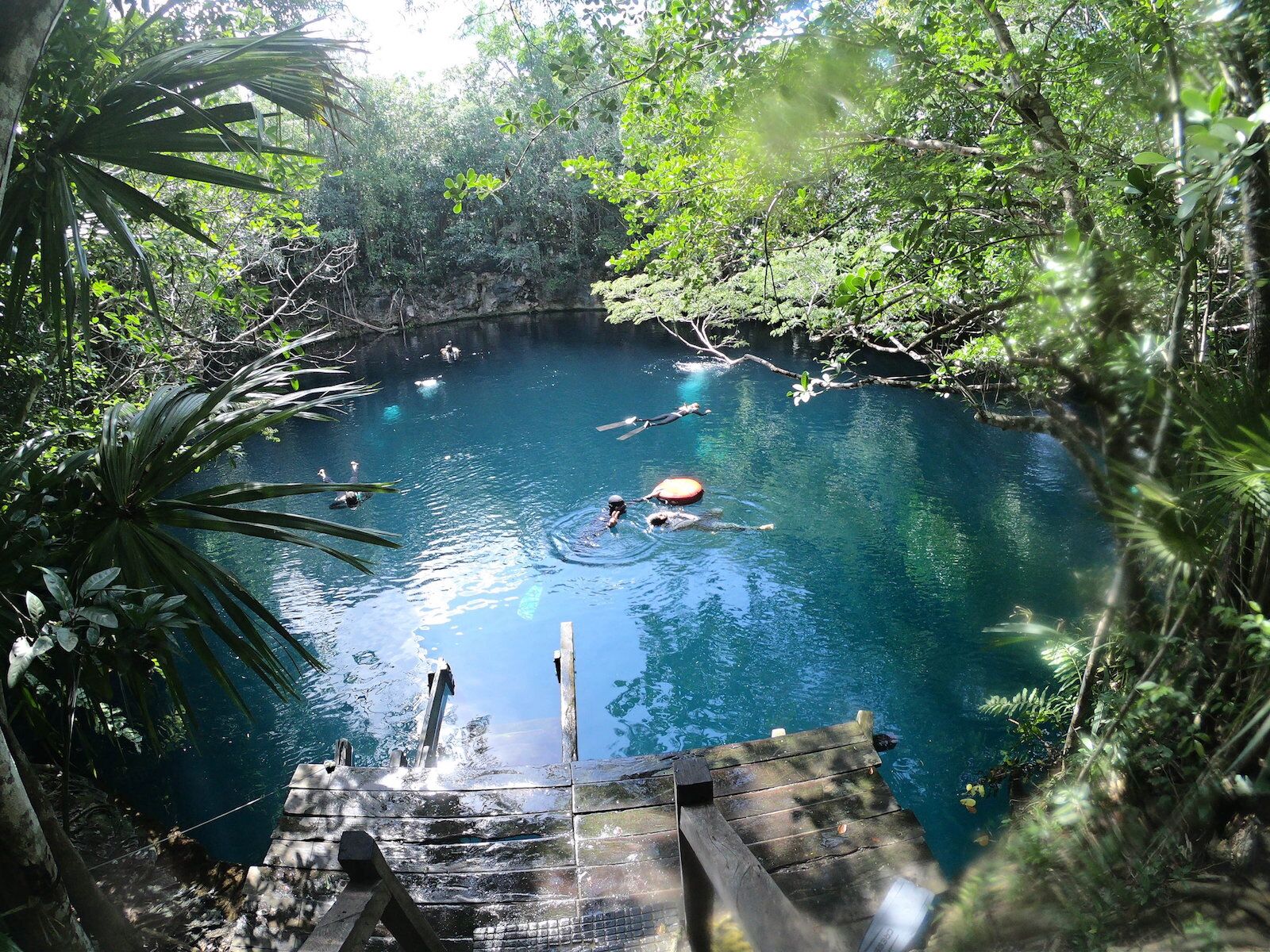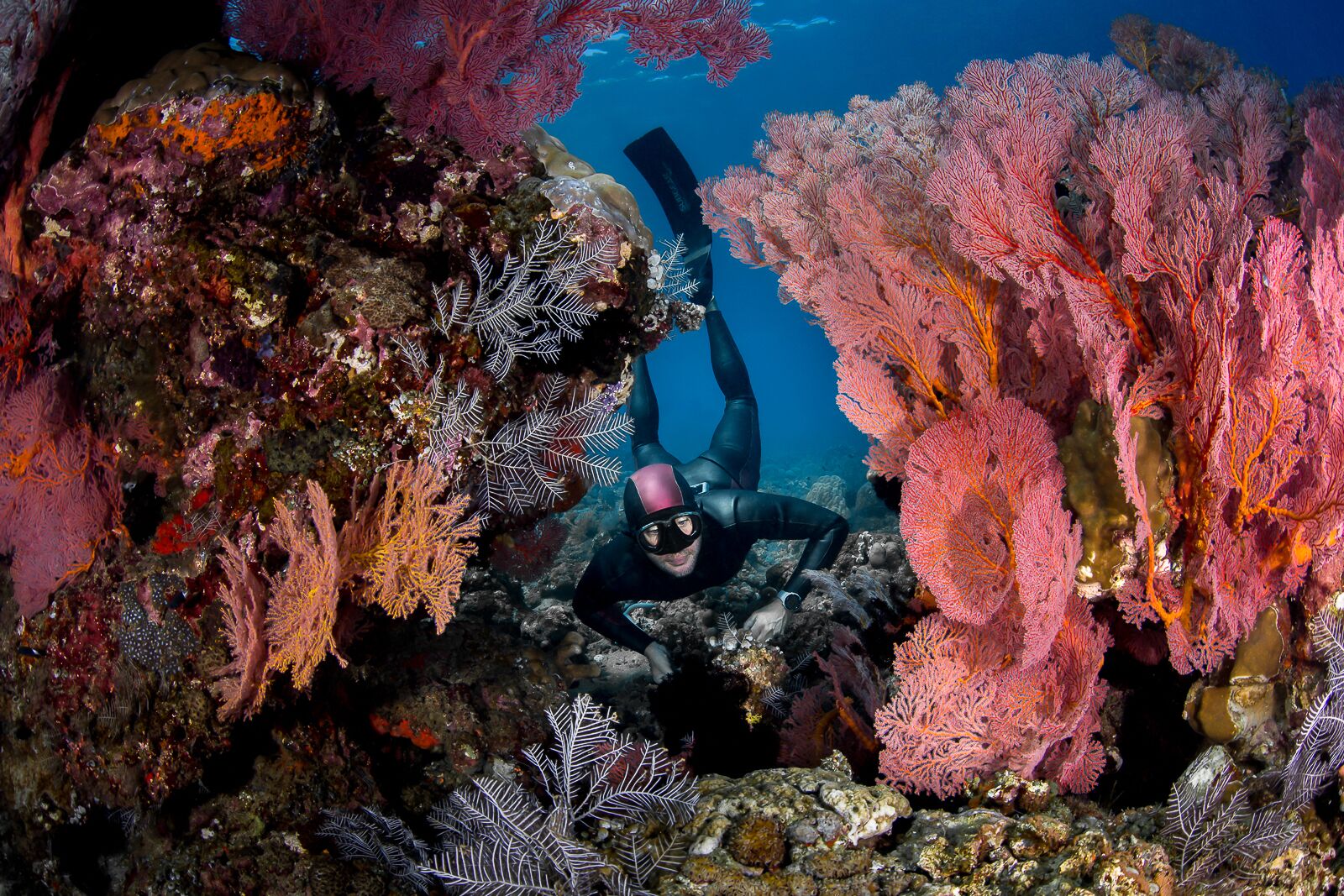it’s as simple as taking a breath, being able to swim, and believing in yourself. If you can do that, you’re ready for freediving – the sport of diving underwater on a single breath (and without any air tanks). The silent, underwater world is yours to experience when you freedive, and you only need to go as deep as you’re comfortable with (though the world record for freediving is 702 feet below the surface).
There’s no splashing or crashing of waves; as soon as you slip beneath the surface, you’re greeted by aquatic serenity. The feeling of being weightless and moving in any direction without the pesky laws of gravity feels akin to flying underwater. That’s a big part of the appeal for many freedivers (and beginner freedivers).
